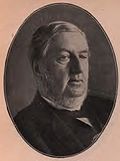Boundaries

The constituency was defined as comprising the "Sessional Division of Bedwellty (except the Parishes of Bedwas and Mynyddislwyn)", and thus constituted the following civil parishes: [1]
- Abertillery
- Aberystruth (including part of Ebbw Vale)
- Bedwellty (including Manmoel, Rhymney, Tredegar and part of Ebbw Vale)
On abolition by the Representation of the People Act 1918, West Monmouthshire's area was divided between three constituencies: Abertillery, Bedwellty and Ebbw Vale.


